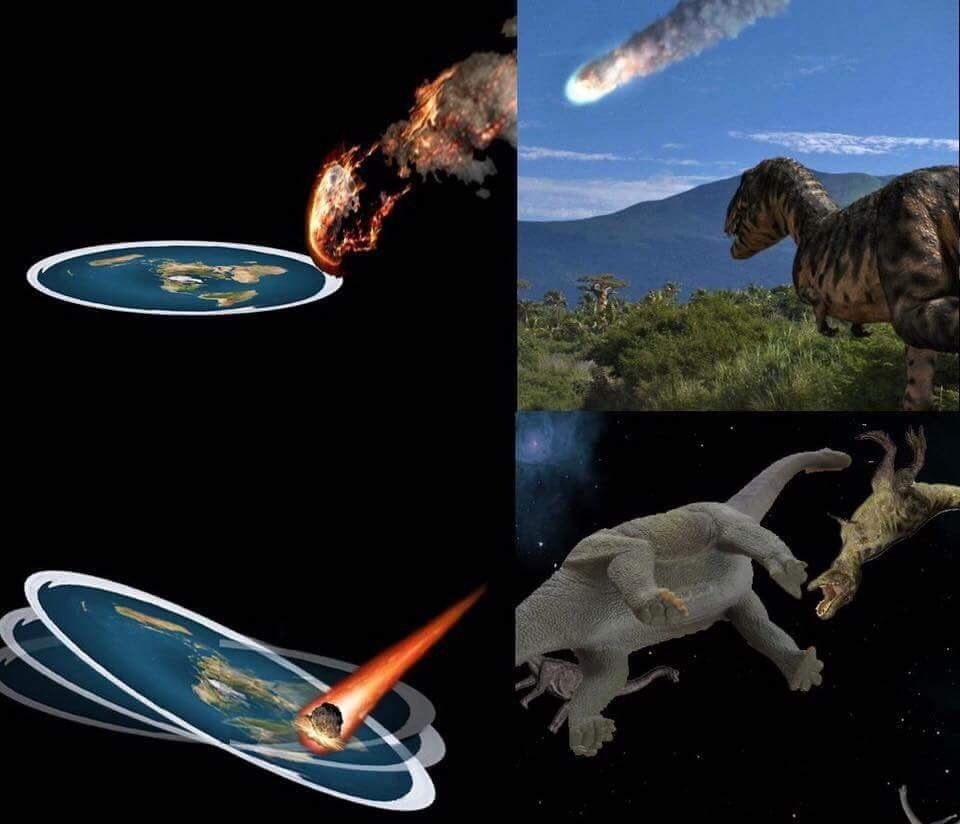We ask you to provide 1 model because everything you say contradicts an earlier thing you've said. The Globe model comfortably answers every single question about the observed phenomena AT THE SAME TIME.
YOU CAN'T DO THIS.
Hilariously wrong.
Can't explain away Lunar eclipses huh?

I would really appreciate it if you actually typed out words instead of making these videos so that I can respond point by point
Posting these videos seem a bit disingenuous to me because you're acting like the case is closed at the end of each video, but I'll go through them
Video 1: There are more than 2 phases of day, there are 4. Day, night, dawn dusk. 1/4 of the plane experiences each of these phases 1/4 of the time, throughout any point of the day. It's odd that you would leave dawn and dusk out of the equation, since their factually observable phenomena
Video 2: You're entire line of "logic" in this video is completely incorrect. There is nothing in that gif that would dictate that areas of the northern and southern hemisphere would experience the same seasons. The areas that the sun is furthest from, experience winter. The areas the sun is closest to, experience summer.
It's that simple
If the sun is revolving above LA, it is EXTREMELY FAR from south africa. You can literally see this in the gif so what are you talking about?
And also, with respect to argentina and THE EQUATOR IN GENERAL, because that area exists at the halfway point of the circle, it experiences THE LEAST AMOUNT OF TIME WHERE THE SUN IS FAR AWAY FROM IT. The sun moves almost twice the distance away from Toronto as it does from any random city in Argentina. This is simple thermodynamics. The longer a heat source is fixed on a point, the hotter that point gets
Video 3: The reason why I wanted to save the lunar eclipse for a different discussion is because it has a whole other set of inconsistencies attached to it.
To my knowledge, shadows are black. I've never seen a shadow that's any other color than black. The supposed earth's shadow being cast on the moon supposedly always produces a black shadow, up until the moon is completely in the earth's shadow, then the shadow turns red??
Please explain how the earth goes from casting a black shadow on the moon, to a red one
Also, while you're at it, please explain in detail how a circular object can cast a shadow that is not an ellipse??
VIdeo 4: Please provide proof that the Southern Cross is visible at all of those points at the same time
Also, I'm using hemisphere to make this easier on you. You definitely know a lot about me so you know that I also use "inward" and "outward" when I believe the person I'm posting at can conceptualize it
Video 5: I didn't contradict myself at all. You can only see the stars above you. Once they cross the horizon they're out of sight. If you COULD see across the plane, you would see the stars on the opposite side of said plane rotate 180 degrees as the REVOLVE TOWARDS YOU. You can't see those stars because of PERSPECTIVE aka THE HORIZON
The sunset video you posted was disingenuous, but you know that. The angle of that video was not parallel to the direction of the sunset.
Here's a TRUE example of a person looking due west towards the sun
Video 6: I'm not sure what the point of this was. I guess you think repeating what I posted and laughing somehow wins you this argument?


 www.thecoli.com
www.thecoli.com

 www.thecoli.com
www.thecoli.com






